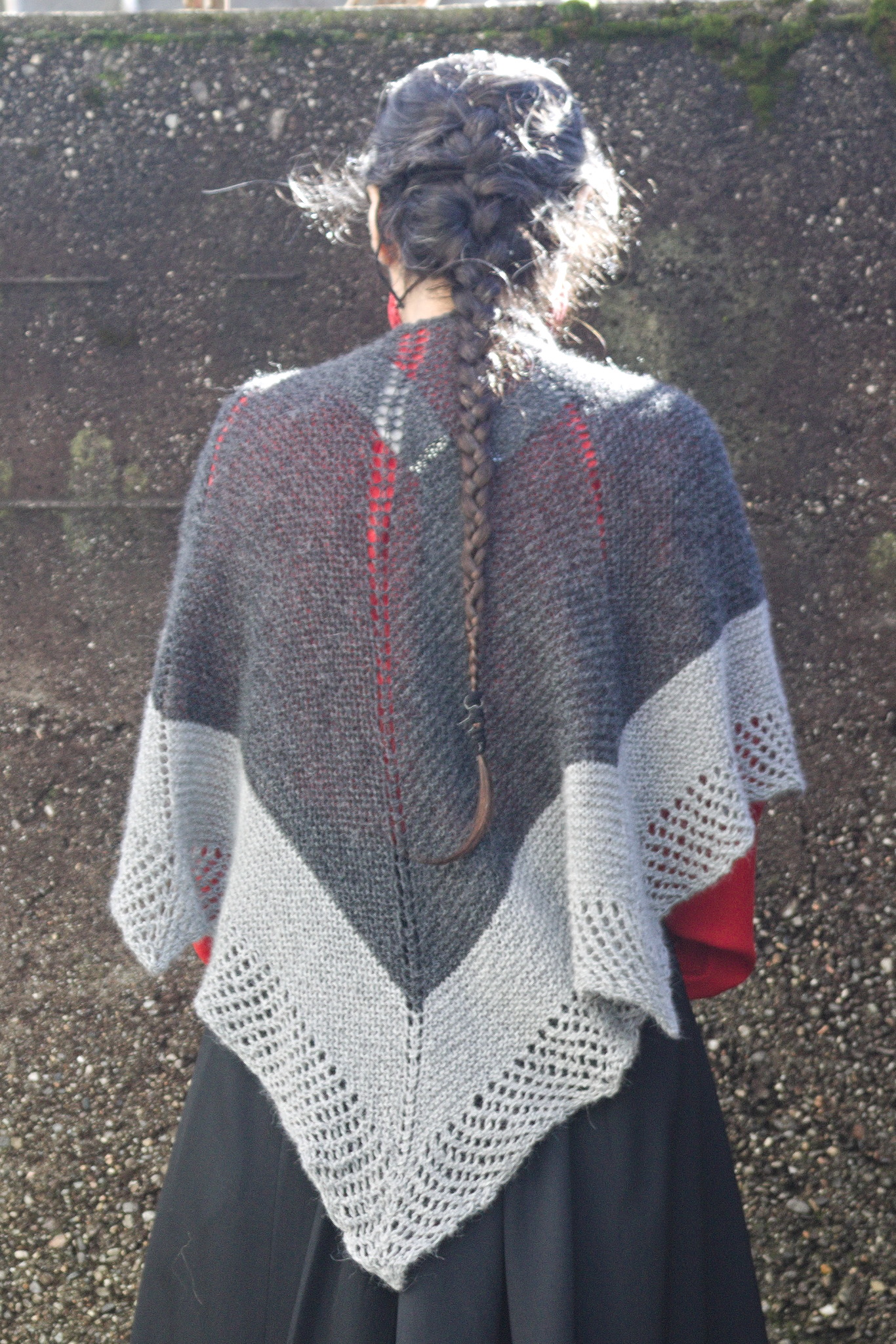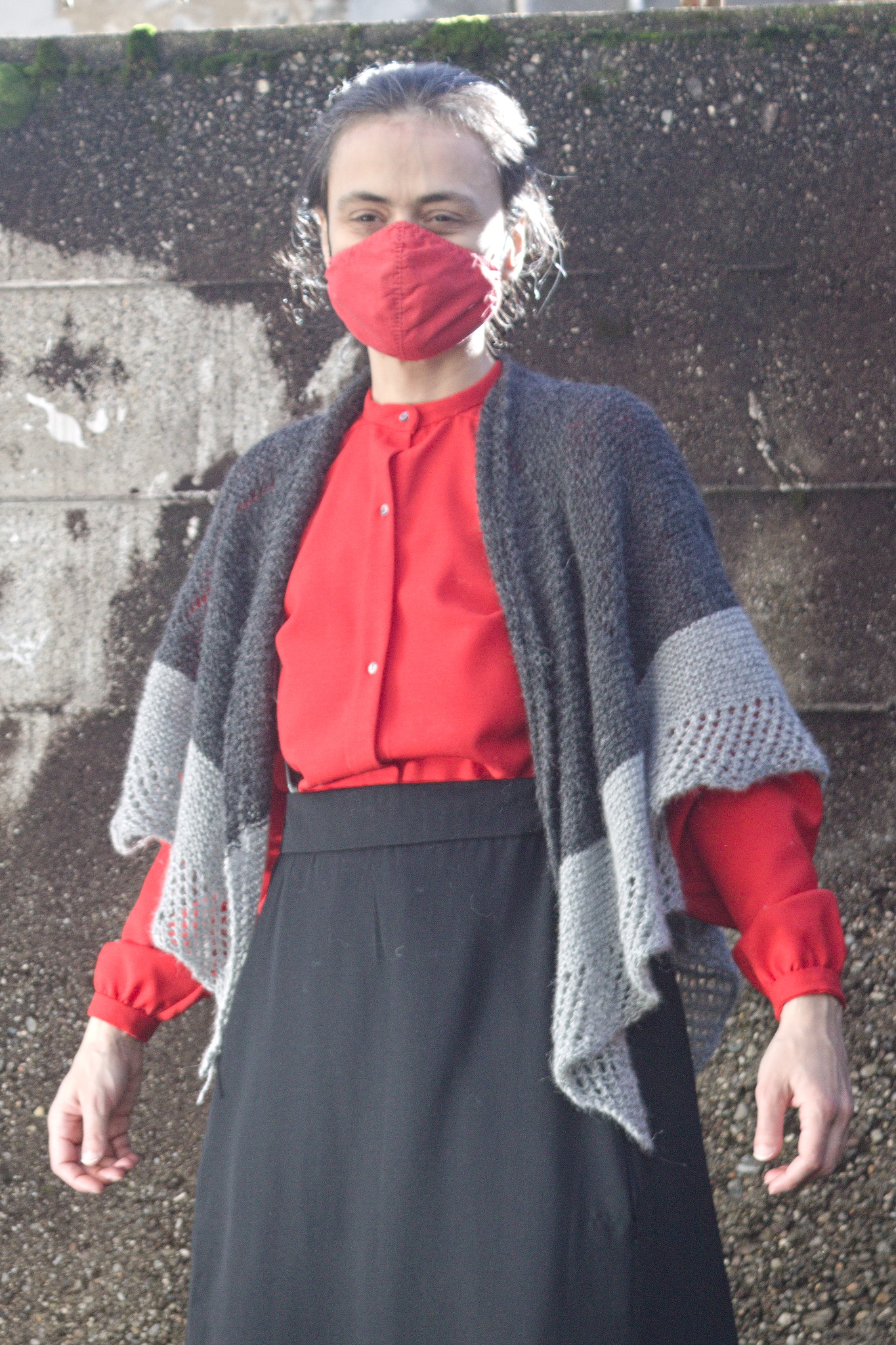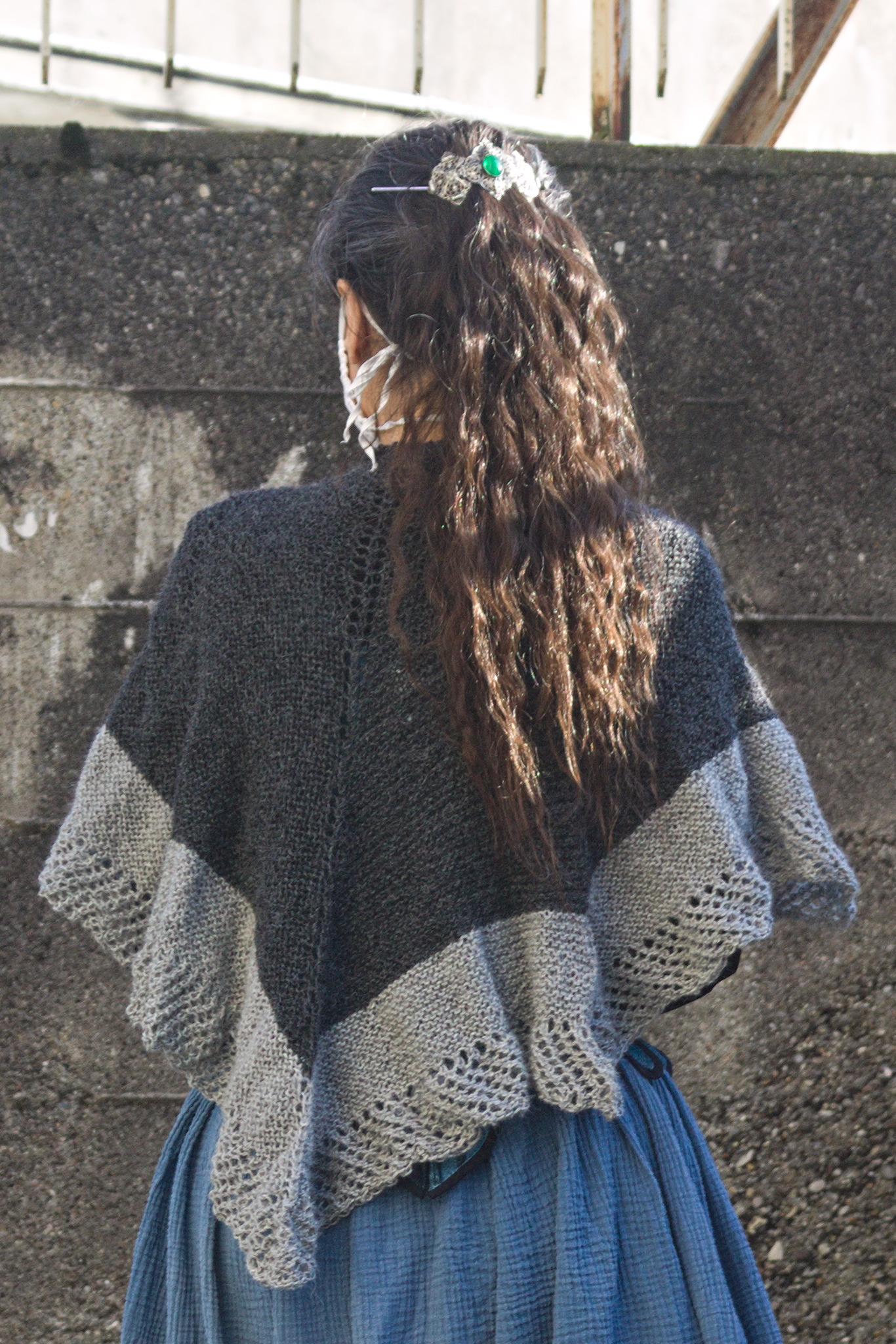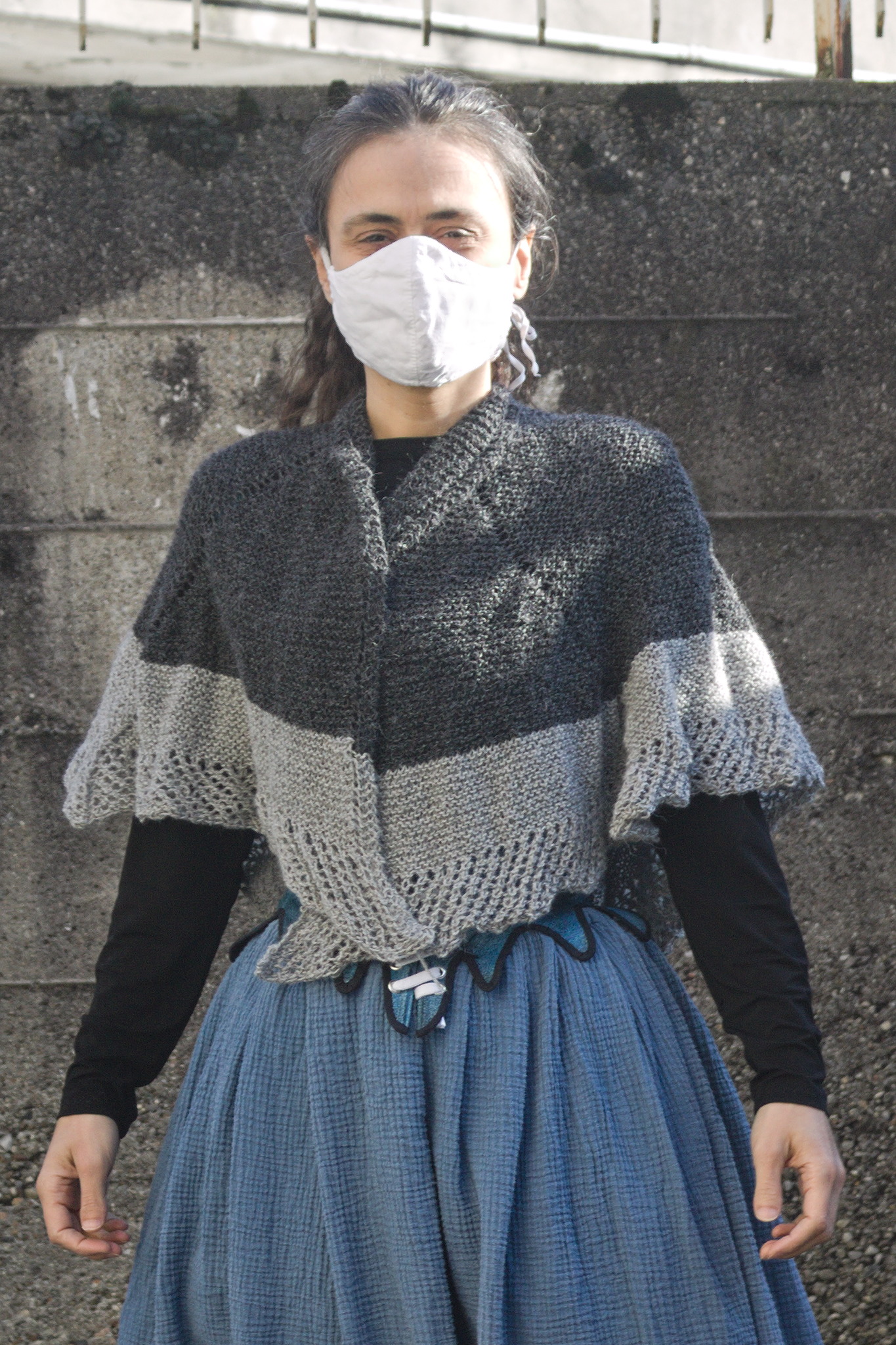Crescent Shawl¶

This is a very wide crescent shawl, almost a full circular capelet.
The version pictured here used garter stitches for 3/4 of the yarn, and a band of very simple lace (k2t yo) at the hem, but any combination of garter stitch and lace rows can be used.
Materials¶
Yarn¶
The classic choice for this would of course be lace-weight or fingering yarn, but sport or DK weight worked with bulky needles may also be fun.
The amount needed will depend on the size of the shawl. For reference the one in the pictures used 200 g of 334 m / 100 m yarn, worked on 5 mm needles.
Needles¶
A pair of long straight needles (for smaller shawls) or a circular (for any size of shawl), in a size significantly bigger than the yarn.
Directions¶
overview
This shawl is worked from the center top out, with a garter stitch border at the top edge.
Other than the 3 garter stitches at each end, each row is divided in 6 sections, with one increase per section on every right side row, arranged in such a way as to be at the end of the section closest to the center.
A marker is placed at the end of each section, followed by a single stitch to divide it from the next section.
In the garter stitch rows, the first and last section have an additional k2t yo hole to divide them from the garter stitch border.
Start with a garter tab: provisionally cast on 3 sts; work 34 rows of garter stitch on those stitches; then k, pick up 17 sts, one in each garter stitch rib, put the 3 starting sts back on the needle, for a total of 23 sts.
Now prepare the 6 sections:
for the garter stitch bands, continue working as follow:
- odd rows:
- even rows:
k all sts;
for the lace bands work the following four rows repeat:
Work until the shawl is as long as you want it, or until you only have enough yarn for 3–4 rows.
Bind off with a russian bind off: k, * k, slip 2 sts from the right to the left needle, k2t fbl * until all of the live sts have been worked, pass yarn in the last live st.
Block the shawl in a crescent / circular shape.
Gallery¶


The back of the shawl before blocking.¶

The front of the shawl before blocking.¶